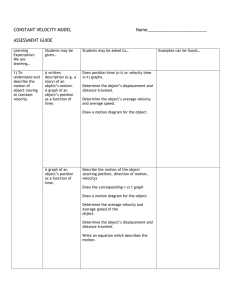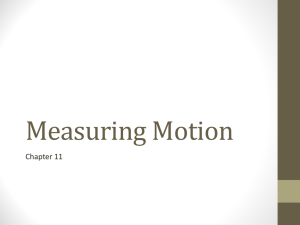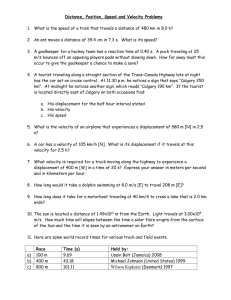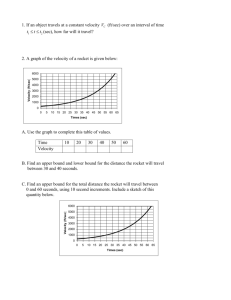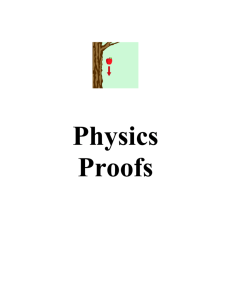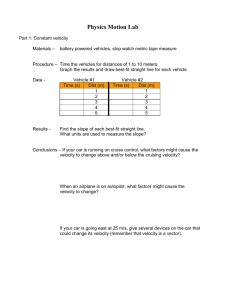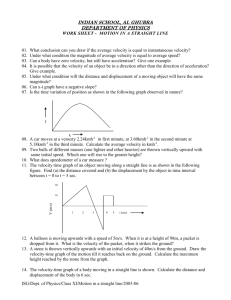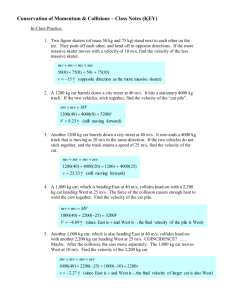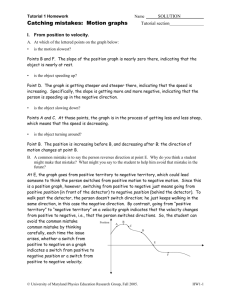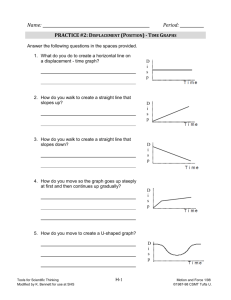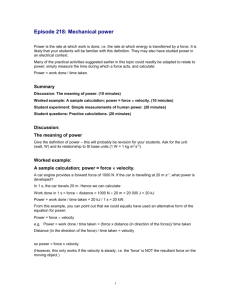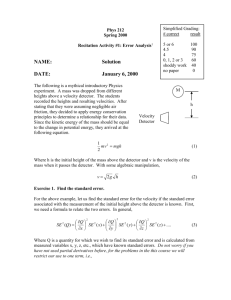template
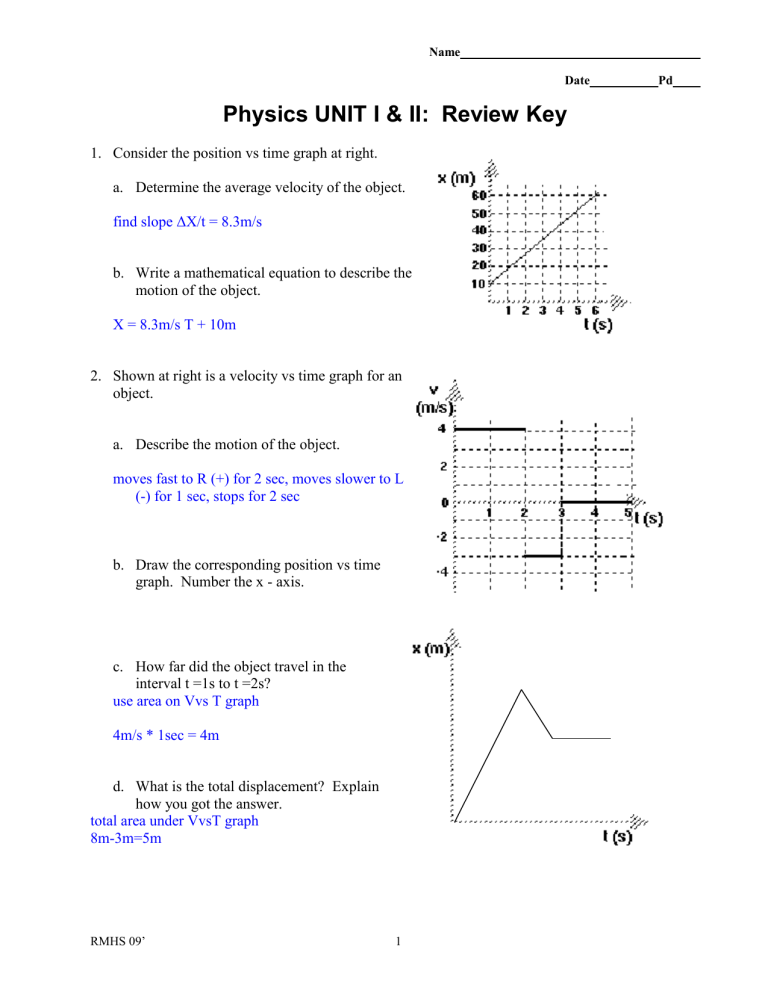
Name
Physics UNIT I & II: Review Key
1. Consider the position vs time graph at right. a. Determine the average velocity of the object. find slope ΔX/t = 8.3m/s b. Write a mathematical equation to describe the motion of the object.
X = 8.3m/s T + 10m
2. Shown at right is a velocity vs time graph for an object. a. Describe the motion of the object. moves fast to R (+) for 2 sec, moves slower to L
(-) for 1 sec, stops for 2 sec b. Draw the corresponding position vs time graph. Number the x - axis. c. How far did the object travel in the interval t =1s to t =2s? use area on Vvs T graph
4m/s * 1sec = 4m d. What is the total displacement? Explain how you got the answer. total area under VvsT graph
8m-3m=5m
Date Pd
RMHS 09’ 1
3. Johnny drives to Wisconsin (1920 miles) in 32 hours. He returns home by the same route in the same amount of time. a. Determine his average speed.
S = d/t S= 1920mi/32 hrs = 60mi/hr or 3840mi/62hr = 60mi/hr b. Determine his average velocity.
V= ΔX/t = 0-0/32hrs = 0 c. Compare these two values and explain any differences. vel depends on displacement (change in position) , starting and ending position are the same so ΔX is zero
4. Consider the v vs t graph below. a. Describe the behavior of the object depicted in the graph. moves fast to the R (+). moves slow to L (-) b. Draw a motion map that represents the behavior of the object.
5. A race car travels at a speed of 95 m/s. How far does it travel in 12.5 s? Use the appropriate mathematical model and show how units cancel. (Keep the proper number of sf's.)
X= 95m/s 12.5s +0 X=VT + X
0
X = 1187.5m or 1200m
RMHS 09’ 2
Use the graph below to answer questions #1-4 that follow:
1. Give a written description to describe the motion of this object.
Starts at origin, moving fast to R (+), slows to a stop
2. Draw the motion map for the object. Include velocity and acceleration vectors.
3. Explain how you could determine the instantaneous velocity of the object at t = 2 s.
Find the slope of a tangent line at 2 sec (you should get approx. 5m/s)
4. Assume the initial velocity was 50 m/s; determine the acceleration of the object.
V=at + V 0= a 10s + 50m/s
a= 5m/s^2
5. A Pontiac Trans-Am, initially at rest, accelerates at a constant rate of 4.0 m/s
2
for 6 s.
How fast will the car be traveling at t = 6 s?
V=at + V V=4.0m/s^2 6s + 0 V=24m/s
6. A tailback initially running at a velocity of 5.0 m/s becomes very tired and slows down at a uniform rate of 0.25 m/s2. How fast will he be running after going an additional 10 meters?
V f
2 = 2a ΔX + V o
2 V f
2 = (5.0m/s) 2 + 2(-0.25m/s^2)(10m)
V=4.5m/s
RMHS 09’ 3
7. For each of the position vs time graphs shown below, draw the corresponding v vs t , a vs t , and motion map.
8. Using the graph below, compare the kinematical behavior of the two objects.
How do you know?
a. Displacement at 3 s b. Average velocity from 0- 3 s
Comparison:
A=B
A=B is A > B, A < B, or A = B, same y-int (same
ΔX) same
ΔX, same T, so same V c. Instantaneous velocity at 3 s A<B slope of a tan line is greater for B than for A
RMHS 09’ 4




